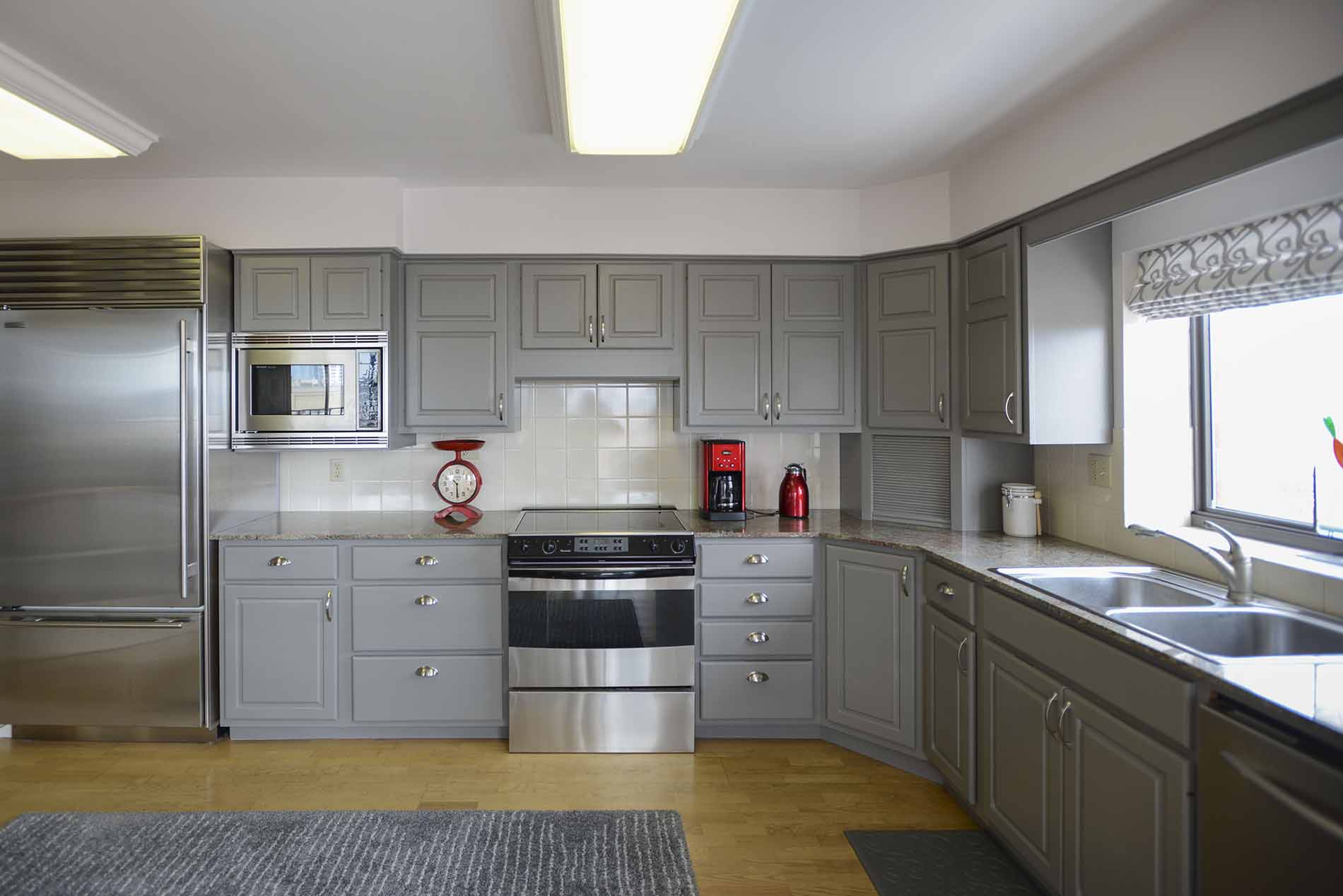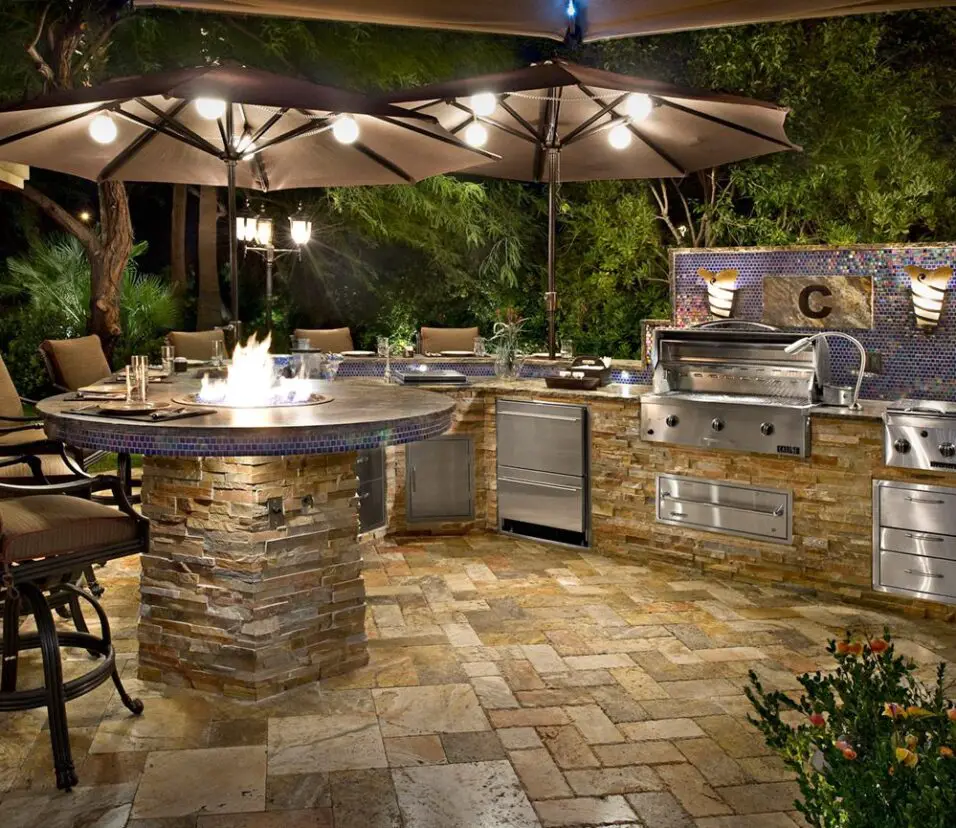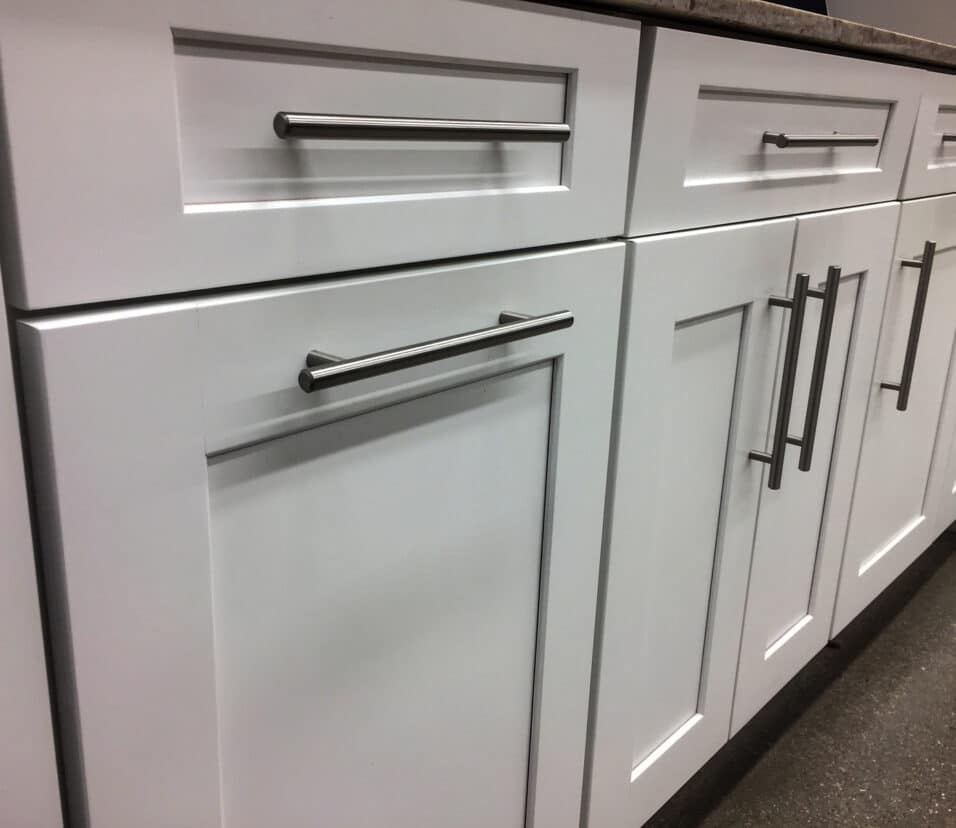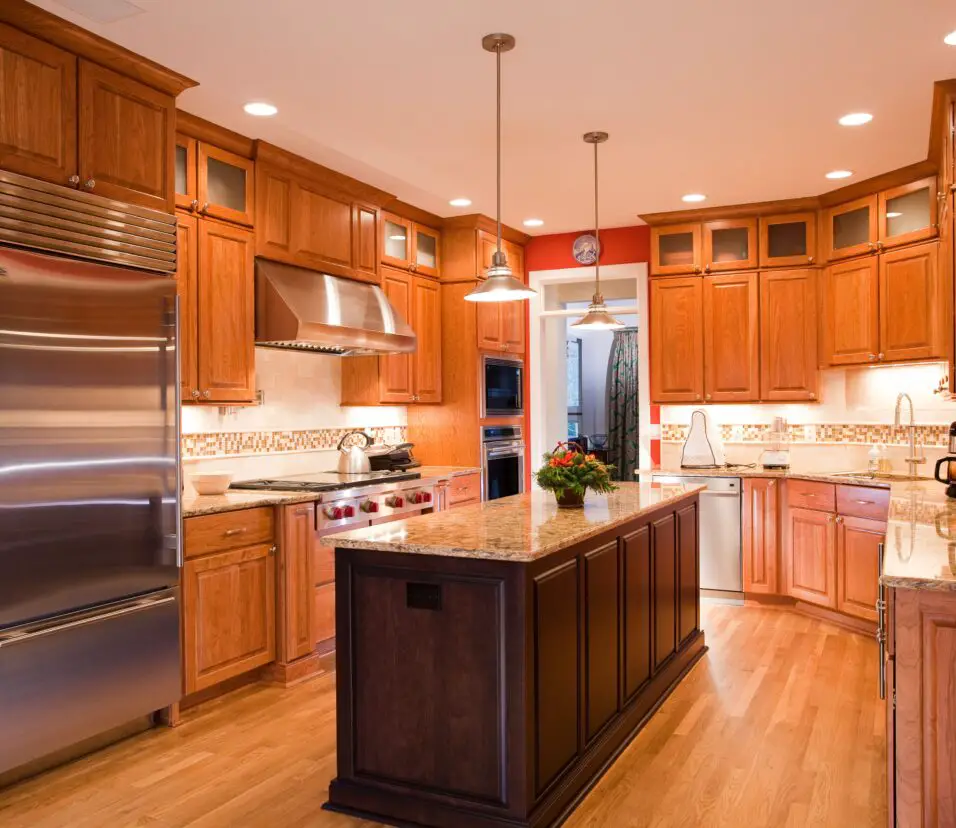How To Clean Painted Kitchen Cabinets
Introduction
How To Clean Painted Kitchen Cabinets: The kitchen is a place where memories are made, meals are prepared, and conversations flow. Over time, our beloved kitchen cabinets, with their vibrant painted surfaces, can accumulate dust, grime, and cooking residue, requiring regular maintenance to preserve their beauty and functionality. Cleaning painted kitchen cabinets is not only essential for maintaining their appearance but also for ensuring a healthy cooking environment.
We will walk you through effective methods and best practices to help you achieve sparkling, spotless, and fresh-looking cabinets. From gathering the necessary materials to identifying the right cleaning solutions, we’ll cover it all. Whether your cabinets are made of wood, MDF, or other materials, our techniques are designed to be safe and suitable for various painted surfaces.
So, roll up your sleeves, put on your apron, and let’s dive into the world of kitchen cabinet cleaning. With our easy-to-follow instructions, you’ll soon have your cabinets looking as pristine as the day they were painted, adding a touch of brilliance to your culinary haven. Don’t forget to clean the handles and knobs for an overall refreshed appearance.

What should I use to clean my painted kitchen cabinets?
Dish soap and warm water, along with a microfiber cloth, is the best solution for cleaning a painted cabinet.
One of the safest and most widely used methods to clean painted kitchen cabinets is by using mild dish soap and warm water. This combination effectively removes everyday dirt, grease, and grime without causing damage to the paint. Start by filling a bucket with warm water and add a few drops of mild dish soap. Dip a soft, clean cloth into the soapy solution and wring it out. Wipe down the cabinet surfaces gently, paying extra attention to areas that tend to accumulate more grease and residue.
White vinegar is a natural cleaning agent with mild acidic properties that can effectively cut through grease and stubborn stains. To create a white vinegar and water cleaning solution, mix equal parts of vinegar and water in a spray bottle. Spray the solution onto the painted surfaces and let it sit for a few minutes before wiping it off with a soft cloth. The vinegar’s acidity helps break down grime and leaves your cabinets looking fresh and spotless.
For tougher stains or grime buildup, baking soda can be an excellent cleaning agent without being abrasive to the painted surface. Mix baking soda with a small amount of water to create a thick paste. Apply the paste to the stained areas and gently scrub with a soft cloth or a non-abrasive sponge. The baking soda paste will act as a gentle abrasive, lifting off stubborn stains without scratching the paint.
How do you clean cabinets without removing paint?
How to Clean Painted Cabinets
- For an easy, budget-friendly spot cleaner, just mix one part water with two parts baking soda. Dab the paste onto the stain, let sit for a few minutes, and wipe clean.
- To clean grease off kitchen cabinets, use a cloth dampened with diluted ammonia.
One of the safest and most widely used methods to clean painted kitchen cabinets is by using mild dish soap and warm water. This combination effectively removes everyday dirt, grease, and grime without causing damage to the paint. Start by filling a bucket with warm water and add a few drops of mild dish soap. Dip a soft, clean cloth into the soapy solution and wring it out. Wipe down the cabinet surfaces gently, paying extra attention to areas that tend to accumulate more grease and residue.
White vinegar is a natural cleaning agent with mild acidic properties that can effectively cut through grease and stubborn stains. To create a white vinegar and water cleaning solution, mix equal parts of vinegar and water in a spray bottle. Spray the solution onto the painted surfaces and let it sit for a few minutes before wiping it off with a soft cloth. The vinegar’s acidity helps break down grime and leaves your cabinets looking fresh and spotless.
For tougher stains or grime buildup, baking soda can be an excellent cleaning agent without being abrasive to the painted surface. Mix baking soda with a small amount of water to create a thick paste. Apply the paste to the stained areas and gently scrub with a soft cloth or a non-abrasive sponge. The baking soda paste will act as a gentle abrasive, lifting off stubborn stains without scratching the paint.
If you prefer a ready-made solution specifically designed for cabinet cleaning, there are numerous commercial cabinet cleaners available in the market. Before using any commercial cleaner, make sure it is labeled as safe for painted surfaces. Always follow the manufacturer’s instructions and test the product on a small inconspicuous area first to ensure compatibility with your cabinets.
How do you clean kitchen cabinets without removing finish?
The Best Way to Clean Kitchen Cabinets without Removing the Finish
- Fill your sink or a large bowl with warm water.
- Add a few drops of dish soap and give the mixture a swirl.
- Dip a microfiber cloth in the solution and wring out excess moisture.
- Wipe down your kitchen cabinets from top to bottom.
The safest and simplest way to clean painted cabinets is by using mild dish soap and warm water. Fill a bucket with warm water and add a few drops of mild dish soap. Dip a soft cloth or sponge into the soapy solution, then wring it out to avoid excess water. Gently wipe down the cabinet surfaces, being careful not to use excessive force that could scratch or damage the paint. After cleaning, use a clean damp cloth to remove any soapy residue, and then dry the cabinets thoroughly with a soft towel.
White vinegar is a natural and effective cleaner that can help cut through grease and remove stains from painted cabinets. Mix equal parts of white vinegar and water in a spray bottle. Spray the solution onto a soft cloth or sponge, then gently wipe the cabinet surfaces. Allow the vinegar solution to sit for a few minutes on stubborn stains or greasy spots before wiping it off. As vinegar has a strong odor, ensure proper ventilation while cleaning and avoid using it excessively to prevent any potential damage to the paint.
For more stubborn stains or greasy buildup on painted cabinets, baking soda can be an excellent non-abrasive cleaning agent. Create a paste by mixing baking soda with a small amount of water. Apply the paste to the stained areas and gently scrub using a soft cloth or sponge. The baking soda’s mild abrasive properties will help lift off the grime without harming the paint. Once the stains are removed, wipe the cabinets clean with a damp cloth and dry them thoroughly.
How do you take care of painted cabinets?
For best results, use gentle cleaning solutions like two parts warm water and one part dish soap. Alternatively, you can also mix two parts hot water with one part white vinegar to clean your cabinets safely and gently. Don’t spray cleaning solution directly onto your cabinets.
Start by dusting the cabinet surfaces with a soft microfiber cloth or a duster. Removing loose dust and debris is the first step in preventing scratches during the cleaning process. After dusting, use a soft, damp cloth to wipe down the cabinets gently. Avoid using excessive water, as moisture can be damaging to certain finishes. Wipe in the direction of the wood grain or finish to prevent any potential damage.
A gentle solution of mild dish soap and warm water is safe for most cabinet finishes. Mix a few drops of dish soap in a bucket of warm water and dampen a soft cloth or sponge. Wipe down the cabinets, again following the grain or finish direction. The mild soap will help cut through grease and grime without harming the cabinet’s finish. After cleaning, use a clean, damp cloth to remove any soapy residue, then dry the cabinets thoroughly with a soft towel.
White vinegar is a natural and effective cleaner that can help remove stubborn stains and grease without harming the finish. Create a mixture of equal parts white vinegar and water in a spray bottle. Spray the solution onto a soft cloth or sponge and gently wipe the cabinet surfaces. Allow the vinegar solution to sit for a few minutes on stubborn stains or greasy spots before wiping it off. As vinegar has a strong odor, ensure proper ventilation while cleaning and avoid using it excessively.

What is the best natural cleaner for cabinets?
Mix a 50/50 solution of vinegar and warm water and pour it into a spray bottle. Mist on cabinets, let sit for a minute or two and then wipe clean with a soft cloth. Add a few drops of liquid dishwashing detergent to the vinegar and water solution to clean extremely grimy cabinets.
Dusting your painted cabinets regularly is the first step in their care. Dust and debris can accumulate over time, dulling the cabinet’s finish and making it look less appealing. Use a soft microfiber cloth or a duster to gently remove the dust from the cabinet surfaces. Regular dusting prevents scratches and ensures your cabinets always look clean and well-maintained.
When it’s time to clean your painted cabinets, opt for gentle cleaning solutions that won’t damage the paint. A mixture of mild dish soap and warm water is an excellent choice for regular cleaning. Avoid using harsh chemicals, bleach, ammonia, or abrasive cleaners, as these can strip the paint or cause discoloration. Stick to natural and non-abrasive solutions to protect the cabinet’s finish.
For tougher stains or grease buildup, a white vinegar and water solution can be effective without harming the paint. Mix equal parts white vinegar and water in a spray bottle. Spray the solution onto a soft cloth or sponge and gently wipe the cabinet surfaces. Vinegar’s acidity helps cut through grime and leaves your cabinets looking refreshed.
Stubborn stains or sticky residues can be treated with a baking soda paste. Create a paste by mixing baking soda with a small amount of water. Apply the paste to the stained areas and gently scrub using a soft cloth or sponge. The baking soda acts as a mild abrasive, removing stains without damaging the paint. After cleaning, wipe the cabinets clean with a damp cloth and dry them thoroughly.
What is the most powerful cleaner in the kitchen?
For those times when you need real disinfecting power to eliminate viruses and bacteria, it’s hard to beat the power of bleach. Clorox Clean-Up spray is ideal for sinks, floors, countertops, and more — but be careful of delicate surfaces and avoid using this spray on textiles.
Baking soda is another fantastic natural cleaner that can tackle tough stains and sticky residues. Create a paste by mixing baking soda with a small amount of water and apply it to the stained areas on your cabinets. The baking soda’s gentle abrasiveness helps lift off the grime without scratching the surfaces. Afterward, wipe the cabinets clean with a damp cloth and dry them thoroughly.
Lemon juice is a natural degreaser and has antibacterial properties, making it an excellent choice for cleaning kitchen cabinets. Mix equal parts of lemon juice and water in a spray bottle and use it to wipe down the cabinets. The fresh citrus scent of lemon will leave your cabinets smelling delightful.
Olive oil is not only great for cooking but also serves as a natural cabinet polish. Mix a few drops of olive oil with vinegar or lemon juice to create a natural and effective wood cleaner. This solution will clean and nourish the wood, bringing out its natural luster and shine.
Castile soap is a plant-based soap made from vegetable oils, making it a safe and gentle natural cleaner for cabinets. Mix a few drops of castile soap with warm water to create a mild cleaning solution. It effectively removes dirt and grime without causing any damage to the cabinet’s finish.
Tea tree oil is a powerful natural antibacterial and antifungal agent. Adding a few drops of tea tree oil to your vinegar or water solution can enhance the cleaning power, making it ideal for kitchen cabinets that require extra sanitization.
How long do painted kitchen cabinets last?
8-10 years
How long will painted cabinets last? With proper care of professionally painted kitchen cabinets, you can expect your newly painted cabinets to last 8-10 years! While new cabinets will last you much longer, they will also cost thousands more, which can be an unnecessary expense in some cases.
Degreasers are specially formulated to dissolve and remove grease from various kitchen surfaces. They are particularly effective on stovetops, range hoods, oven surfaces, and other areas where grease tends to build up. Some degreasers are available in spray form, while others may require dilution with water.
Oven cleaners are designed specifically to tackle tough, baked-on grease and grime inside ovens. They often come in aerosol or gel form, and some are formulated for self-cleaning ovens. Always follow the manufacturer’s instructions and use caution when working with oven cleaners due to their powerful nature.
For stainless steel appliances and surfaces, stainless steel cleaners are excellent for removing fingerprints, smudges, and grease marks. These cleaners leave a streak-free shine, enhancing the appearance of your stainless steel items.
Citrus-based cleaners contain natural extracts from citrus fruits, such as oranges or lemons. They are effective degreasers and work well on countertops, sinks, and other surfaces. Additionally, they often leave a pleasant and fresh citrus scent.
White vinegar is a powerful natural cleaner with mild acidity that can cut through grease and dissolve mineral deposits. It is particularly useful for descaling appliances like kettles and coffee makers. Mix equal parts of white vinegar and water to create an effective cleaning solution.
What is the best cleaner for grease on painted cabinets?
Vinegar
For heavier grease and stains: Use a mix of vinegar (1 cup), warm water (2 cups), and baking soda (1 tablespoon) as a cleaning solution (tip: add a small amount of dish soap for extra-strength). Take a soft cloth, dip into this mix, and work out the heavier grease and stained areas of your cabinets.
The quality of the paint used and how it is applied to the cabinets can significantly impact their durability. High-quality paint and proper application techniques, such as sanding and priming, contribute to a more resilient finish that can withstand daily wear and tear.
The material of the cabinets also plays a role in determining their lifespan. Solid wood cabinets tend to be more durable and can last for decades if properly cared for. On the other hand, cabinets made of MDF or particleboard may have a shorter lifespan as they are more susceptible to moisture damage and wear.
The frequency and intensity of use can influence the wear on painted cabinets. Cabinets in heavily used kitchens may experience more wear and tear than those in less active spaces. Regular maintenance, such as gentle cleaning and prompt spill cleanup, can extend the life of painted cabinets.
Environmental conditions in the kitchen, such as temperature fluctuations, humidity levels, and exposure to sunlight, can impact the longevity of painted cabinets. High humidity levels may lead to paint peeling or bubbling, while exposure to direct sunlight can cause fading over time.
Proper and regular cleaning is essential for maintaining painted cabinets. Using gentle cleaning agents and soft materials can prevent scratches and damage to the painted surface. Avoid harsh chemicals or abrasive cleaning tools that can strip off the paint.

Conclusion
Regular cleaning is crucial in preserving the life of the painted surfaces, preventing discoloration, and ensuring a hygienic cooking space for you and your loved ones. Remember to use gentle cleaning agents, avoid abrasive tools, and always test new products on a small, inconspicuous area before applying them to the entire surface. As you enjoy the benefits of your immaculate cabinets, take pride in the fact that you’ve mastered the art of maintaining a beautiful and inviting culinary space.
Soft cloths, mild dish soap, water, vinegar, baking soda, and specialty cabinet cleaners (if needed). Remove all items from inside the cabinets to allow easy access during cleaning. Start by dusting off any loose particles, then use a damp cloth to wipe away stains and spills. Employ mild solutions like soapy water for regular cleaning and stronger options like vinegar or baking soda for stubborn stains.
Don’t forget to clean the handles and knobs for an overall painted wood refreshed appearance. Once the cabinets are clean and dry, apply a suitable furniture polish or wax to add shine and protect the painted surface. Make a habit of regular cabinet cleaning to avoid buildup and keep your kitchen looking its best. By investing a little time and effort into the proper care of your painted kitchen cabinets, you’ll ensure that they remain a focal point of your kitchen, radiating a sense of cleanliness and warmth.








